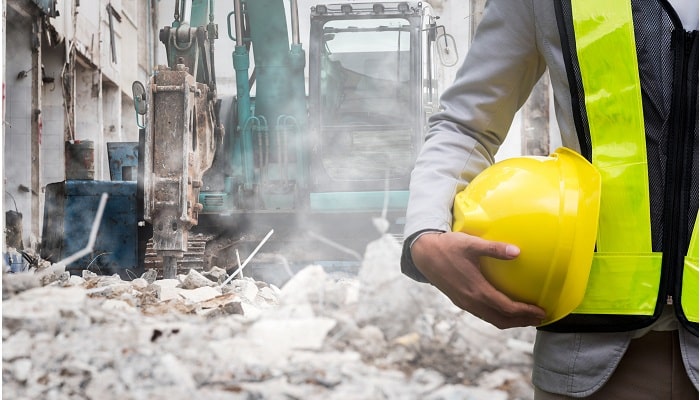There has been a tangible decline in the health of construction workers. The reasons are plenty to make us believe that these construction sites need a lot of refinement. Although a lot is being done to suppress the dust engulfing these construction sites but are we doing enough is the question we need to ask ourselves.
As is the present scenario which we are in, a lot of infrastructural development is occurring across continents. It won’t sound like an overstatement if we suggest that the development ratio has quadrupled from the previous decade. All thanks to the emergence of a very forward-looking vision, especially by policymakers and corporates from the developing countries, we are witnessing a complete overhaul in the infrastructural landscape.
But with all the development taking place, one can see a sorry decline in the health of workers at sites. And we aren’t talking of the smoke coming out of vehicles or factories here, but the blanket of harmful dust which is a combination of various particles right from heavy metals to asbestos to silica and more. And the fact remains that once this dust is inhaled, a construction worker is exposed to seriously alarming health issues like heart strain, a pretty reduced lung capacity as well as irritation of the eyes, nose, and lungs.
This dust is no ordinary sand. For instance Silica, a small crystalline substance can cause cancer of lungs or kidney disease and silicosis, an incurable lung situation which can be fatal. In the U.S. alone around 2.3 million people get affected by silica at work. The initial health issue is related to allergies or mild fever. That said, with consistent exposure a significant amount of damage is caused around the tissue. If the issue is identified quickly it can be treated otherwise it becomes pretty complex.
The only corrective measure that can be implemented is mitigating dust at the worksite. Here we will discuss some of the most effective steps which can be taken in order to lessen the effect of dust on humans.
Personal Protective Equipment
The idea is that all the employees working at the construction site get minimally exposed to the dust. And this is possible to a great extent when a PPE is worn by all of them. Filtering respirators and anti-dust masks can offer immense protection from harmful particles and air. Wearing safety goggles is another way to protect against the irritants. They create a protection around the eyes.
Site Access
Only exclusive entry should be given to people at the site. Excessive vehicle movement causes a lot of dust to rise which engulfs the entire construction area. In order to keep the debris to a minimal, supervisors at the site must restrict access points. Paved parking spots can be created and companies can also limit activities at the site during high winds.
Water Application
Watering down the site is one more way to contain dust. Consistent use of water trucks spraying water across the construction site can cause the dust to suppress. Depending on the scale of the project site, workers should water the area at least thrice a day. It is not only an effective technique, but economical too.
Use of Chemical Suppressants
Project managers due to their experience and expertise can also take the help of certain chemical dust suppressants. However, the performance of these products would completely depend on their effective application, surface moisture content as well as drainage.
Natural Barriers
Barriers across the site area can also prevent the envelope of dust. Creating barriers like snow fences, bales of hay and crate walls can help in dust control. These barriers can control airflow and can stop erosion.
Modern, as well as traditional techniques like the ones discussed above, can surely make a lot of difference in containing dust to a great extent.






































